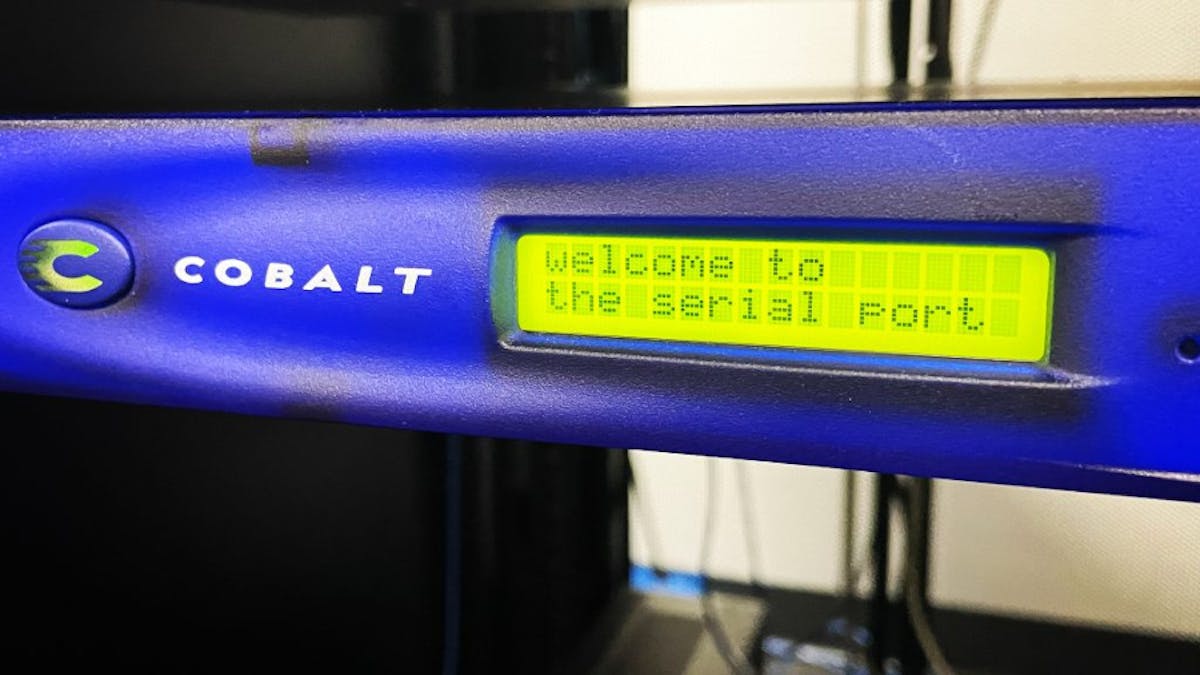Serial Port, a Virtual Computer Museum, Invites You on a Trip Back in Time Courtesy of a Cobalt RaQ
Careful restoration of a server appliance built in 1999 brings a taste of the old web to your browser — complete with guestbook.

Serial Port, a virtual computer museum dedicated to "the most interesting and notable computer systems from the 1990s" is inviting you to take a trip back in time on a website hosted on its latest exhibit: a Cobalt RaQ 3 server.
"The RaQ 3 was the third version of the ground-breaking server appliance RaQ from Cobalt Networks," the museum explains of its acquisition. "Announced in 1999, the RaQ changed the landscape of web hosting and ushered in a new era of commercialization for the Internet as a huge wave of businesses established their online presence. Its simple, bare bones hardware design kept costs low, and the easy-to-use web interface for configuration led to world-wide deployment of tens of thousands of RaQs."
While 1999 isn't exactly ancient, even in the relatively short history of digital computing, it's old enough that most of the remaining devices out there aren't exactly plug-and-play. The museum first had to restore the hardware of the acquired RaQ 3, taking it completely apart and desoldering potentially-dodgy electrolytic capacitors before treating the hardware to a thorough ultrasonic cleaning. New capacitors then went in place and the unit was booted ready for a software overhaul.
"We wanted to experience the original, unadulterated version of the Cobalt RaQ and get a glimpse of what it was like to set up these appliances all those years ago," the Serial Port team explains. "We naturally turned towards The Internet Archive to see if we could find the original restore CDs, and as luck would have it there are two available. The first is version 1.1, and the second is 2.0, and the intended restore method is to connect the server directly to a PC's NIC [Network Interface Card] using a crossover cable."
Unfortunately, things didn't go entirely smoothly. Neither restore CD had a kernel recent enough to recognize the NICs the team had on hand, so virtualization was used in place of physical hardware. After fighting through unrecognized devices and crashes, virtualization was then also abandoned in favor of a vintage Intel Celeron system with a compatible Linksys NIC. "This ended up being the winning combination," the team says. "It's almost like the RaQ knew we were from the future and made us use period-correct hardware."
Once set up, the RaQ 3 was ready to be an exhibit — but an interactive one. "It would only be fitting to host a website on the internet, of course," the museum's staff says. "You, right now, yes, you, can go to raq.serialport.org to check out our dinky little webpage that is being hosted by our fully-restored RaQ 3 server appliance. Throw a shout-out on the guestbook, if you'd like."
The RaQ-hosted page is now available on raq.serialport.org, with Serial Port's other exhibits available on the main museum website.
Freelance journalist, technical author, hacker, tinkerer, erstwhile sysadmin. For hire: freelance@halfacree.co.uk.



